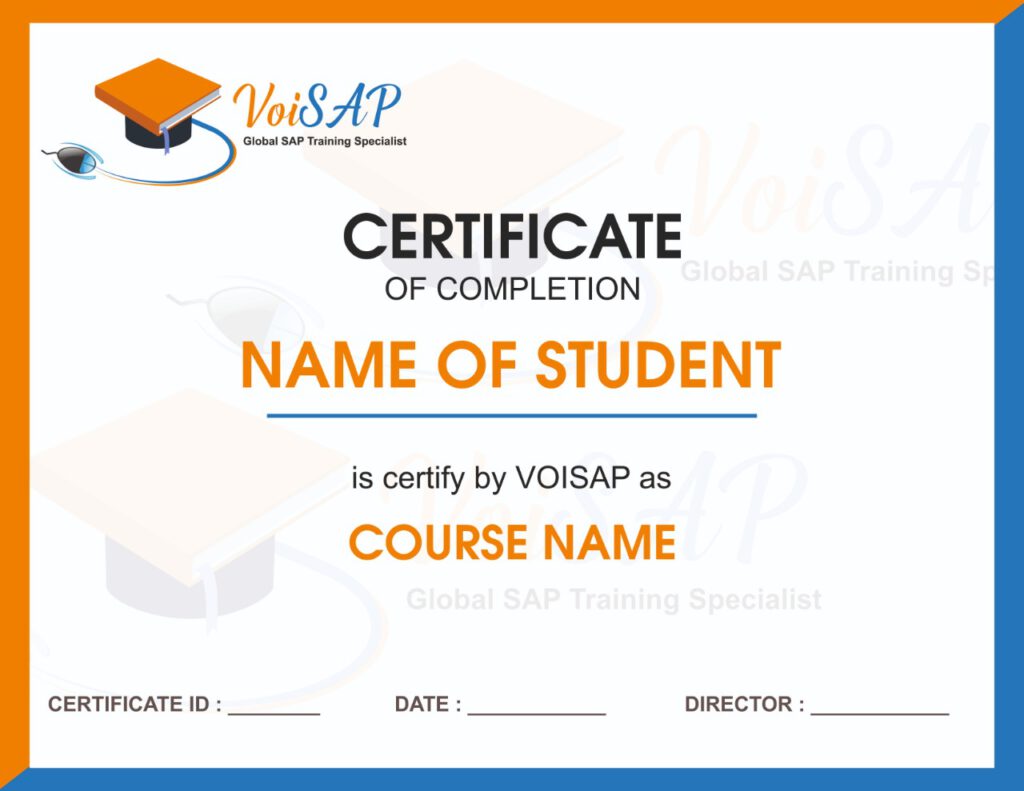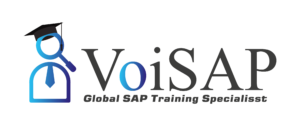MY SQL DBA Certification Training
Eligibility & Pre-requisites
Eligibility
This online SQL certification course is ideal for freshers, programmers, software developers, and testing professionals who want to learn SQL. It’s also ideal for marketing professionals and salespeople who want to better understand their company’s data.Pre-requisites
There are no prerequisites for this database training course. This course can be taken up by anyone who wants to learn SQL.
SQL DBA Course Overview
This SQL certification course gives you all of the information you need to successfully start working with SQL databases and make use of the database in your applications. Learn how to correctly structure your database, author efficient SQL statements, and clauses, and manage your SQL database for scalable growth.
Benefits
SQL, though an old language, is highly significant today as companies across the world are gathering massive amounts of data for their growth. SQL consistently ranks high in the most-requested tech skills and learning it will add great value to your array of skills.
CA: 1-416-569-4606
WhatsApp – 1-416-569-4606
Email – contact@voisap.com
Request more information
Like the curriculum? Enroll Now
Structure your learning and get a certificate to prove it.
Skills Covered
Training Options
Batches
- Lifetime access to high-quality eLearning
- 2000 Step-by-Step Screenshots, SAP Books
- Lifetime System Access
- Free Accounts and Excel Sessions
- 24x7 learner Whatsapp assistance and support
- Professional Resume
- Intense Interview Preparation
- Linkedin Preparation
- Free 6 Months On-the-Job Support
One-on-One (Recommended)
- EVERYTHING OF BATCHES PLUS...
- Lifetime System Access
- Schedule Sessions at your convenience, ANYDAY, ANYTIME
- Ability to cancel, postpone, reschedule sessions (No anxiety of missing sessions)
- Missed sessions? No Problem, Join Full Training as many times
- Access to Realtime Project Documents as Samples
- Access to Exclusive VoiSAP Practice Guides
CORPORATE TRAINING
(Online, Client sight)
Customized to your team's needs
- EVERYTHING OF BATCHES PLUS...
- Customized Training for your Business Processes
- Customized Training Manuals, Documents
- Well Experienced Corporate Trainers
- Simulation test papers for self-assessment
- Simulation test papers for self-assessment
- 24x7 learner assistance and support
Course Currilcum
Objectives: At the end of this module, you will be able to:
• Understand MySQL products, professional services and support for your operating system.
• Define a relational database management system (RDBMS) and describe its structure.
• Explain the use of SQL and MySQL with relational databases
• Define data definition language (DDL) and data manipulation language (DML)
• Understand MySQL client/server model and work with MySQL connectors.
• Install the MySQL server on Linux, start and stop MySQL server
• Interact with the server using the MySQL command-line client.
• Log your MySQL command-line client session to a text file.
• Use MySQL Workbench to interact with the server.
Topics:
• MySQL Overview
• Basics of Relational Databases
• Entities and Relationships
• SQL Language and MySQL
• SQL data definition language and data manipulation language
• MySQL Client/Server Model
• MySQL Connectors
• Installation of the MySQL server
• Starting and stopping MySQL server
• Using the MySQL client
• MySQL Workbench
Hands On
• Install and Configure MySQL Server, Client and MySQL workbench
• Using MySQL Workbench
• Creating the ‘world’ Database & Explore the Schema
Objectives: At the end of this module, you will be able to:
• Describe database modeling
• Use primary keys and foreign keys to achieve referential integrity
• Normalize your data model
• Design your new database
• Model a database using MySQL workbench and view the structure.
• Evaluate a database design
• Explain the use of different data types in database design
• Choose the correct data types while modeling data
• Describe the considerations for selecting data types
Topics:
• Database Modeling
• Keys and Normalization
• Database Design
• Viewing and Evaluating a Database
• Data Types and Database Design
• Numeric, Temporal and String Data Types
• Character Set and Collation Support
• Data Type Considerations
• Meaning of NULL
Hands On:
• Explore an Existing Database
• Designing a New Database
• Selecting Data Types for your New Database
Objectives: At the end of this module, you will be able to:
• Create a database and add tables
• Use the SHOW CREATE TABLE statement
• Set column and table options
• Create indexes, keys, and constraints
• Delete a database.
• Create and delete a table.
• Add and remove table columns
• Modify table columns.
Topics:
• Creating a Database
• Creating a Table
• Showing How a Table Was Created
• Table Options
• Column Options
• Indexes, Keys, and Constraints
• Deleting database and tables
• Creating New Table Using an Existing Table
• Creating a Temporary Table
• Copying an Existing Table Structure
• Adding, removing and modifying table columns and indexes
Hands On:
• Creating a Database
• Deleting a Database
• Creating and Deleting a Table
• Altering Table Columns
Objectives: At the end of this module, you will be able to:
• Retrieve database data using the SELECT statement from your database.
• Use the SELECT statement clauses: FROM, DISTINCT, WHERE, ORDER BY, and LIMIT
• Create views
• Query data from application code
• Export and import a delimited file
Topics:
• The SELECT Statement
• Creating Views
• Querying Data from an Application
• Exporting and Importing a Delimited File
• Troubleshooting: Authorization Levels
• Manipulating Data and inserting records
• Replacing and updating existing records
• Deleting records
• Exporting and importing a script
• Multistatement Transactions
• Modifying Data from an Application
Hands On:
• Executing Basic Queries
• Importing a Delimited File
• Performing Basic Queries on Imported Data
• Performing Basic Queries from a PHP Application
• Exporting Table Data for MySQL Database
• Inserting, Modifying and Deleting Data
• Exporting a Script
Objectives: At the end of this module, you will be able to:
• Explain the concept of a join
• Use the JOIN keyword to query multiple tables
• Execute inner and outer joins
• Use the UNION keyword to combine multiple queries
• Use built-in functions in MySQL
• Describe and use: string functions, Date and time functions, Numeric functions.
• Use aggregate functions with the SELECT statement
Topics:
• Querying Multiple Tables
• Joining Tables with SELECT
• Inner Joins
• Outer Joins
• Table Name Aliases
• Functions in MySQL Expressions
• Using Functions
• String Functions
• Date and time functions
• Numeric Functions
• Aggregate Functions
• Spaces in Function Names
Hands On:
• Using Joins in Queries
• Using Unions in Queries
• Using Built-In, String, and Date and Time Functions
• Using Numeric Functions
• Using Aggregate Functions
Objectives: At the end of this module, you will be able to:
• Explain how MySQL processes, stores, and transmits data
• Configure InnoDB tablespaces
• Explain how MySQL uses memory
• Configure the InnoDB buffer pool
• List some of the available plug-ins
Topics:
• Architectural Overview
• Understand how MySQL Transmits Data and Processes Requests
• Understand how MySQL Stores Data and Uses Memory
• Tablespaces, Redo and Undo Logs
• Plug-in Interface
Hands On:
• Configuring Tablespaces
• Configuring the Buffer Pool
Objectives: At the end of this module, you will be able to:
• Describe database modelling.
• Use primary and foreign keys to achieve referential integrity.
• Normalize your data model.
• Design your new database.
• Model a database using MySQL workbench and view the structure.
• Evaluate a database design.
• Explain the use of different data types in database design.
• Choose the correct data types while modelling data.
Topics:
• Server Configuration Options
• Option Files and System Variables
• Launching Multiple Servers on the Same Host
• Monitoring Tools & Techniques
• MySQL Enterprise Audit
• MySQL Enterprise Monitor
• Monitoring User Activity
Hands On:
• Modifying the Configuration File
• Changing Dynamic Settings
• Configuring the Slow Query Log
• Using Performance Schema
Objectives: At the end of this module, you will be able to:
• Create user accounts.
• Design a permission structure.
• Control user permissions
• Grant access to system operations
• Authenticate by using plug-ins
• Expire accounts manually and automatically.
• Reset a forgotten root password.
Topics:
• Creating and Modifying User Accounts
• Configuring Passwords
• Authentication Plug-Ins
• Granting Permissions & Grant Tables
Hands On:
• Creating Users
• Granting Permissions
Objectives: At the end of this module, you will be able to:
• Recognize common security risks
• List security problems and counter-measures for networks, passwords, operating systems, file systems and applications.
• Protect your data from interception and access.
• Use SSL for secure MySQL server connections.
• Use SSH to create a secure remote connection to MySQL.
Topics:
• Understanding Security Risks
• Network Security & Secure Connections
• Password & Operating System Security
Hands On:
• Enable SSL Connections on the MySQL Server
Objectives: At the end of this module, you will be able to:
• Distinguish between the different types of backup
• State advantages and disadvantages of the various backup techniques
• Implement a backup strategy
• Use MySQL Enterprise Backup to perform consistent backups.
• Use the mysqldump and mysqlpump utilities to perform logical backups
• Understand when and how to use raw file backups
• Back up the binary log
Topics:
• Understanding Backups & Backup Techniques
• Creating a Backup Strategy
• MySQL Backup Tools
• Raw Backup Methods
Hands On:
• Backing up using mysqldump and mysqlpump
Confused about Career? Ask VoiSAP - CareerEcademy
What our eLearners say about us
Excellence speaks for itself. Experience us through Authentic Google Reviews and Videos.
Google Reviews





Like the curriculum? Enroll Now
Structure your learning and get a certificate to prove it.
Certification
As part of our eLearning program, you will be practically involved in various projects and assignments, which include Realtime Project Scenarios as well. This gives you realtime practical industry exposure.
VoiSAP’s certificate will be issued once you successfully complete the training which includes practicals, assignments and quiz.
VoiSAP’s certification training is recognized by more than 500 top MNCs, including CGI, Accenture, Walmart, Amazon, IMAX, Sony, RBC, HSBC, Standard Chartered Bank, IBM, Infosys, Lafarge, TCS, and many more.

SAP FICO Training FAQs
- View the recorded session of the class available in your LMS.
- You can attend the missed session, in any other live batch.”
We have limited number of participants in a live session to maintain the Quality Standards. So, unfortunately participation in a live class without enrolment is not possible. However, you can go through the sample class recording and it would give you a clear insight about how are the classes conducted, quality of instructors and the level of interaction in the class.
You can Call us at +1 4165694606 OR Email us at contact@voisap.com. We shall be glad to assist you.
Online Self-Learning: In this mode, you will receive lecture videos and can proceed through the course at your convenience.
WinPython portable distribution is the open-source environment on which all hands-on exercises will be performed. Instructions for installation will be given during the training.


